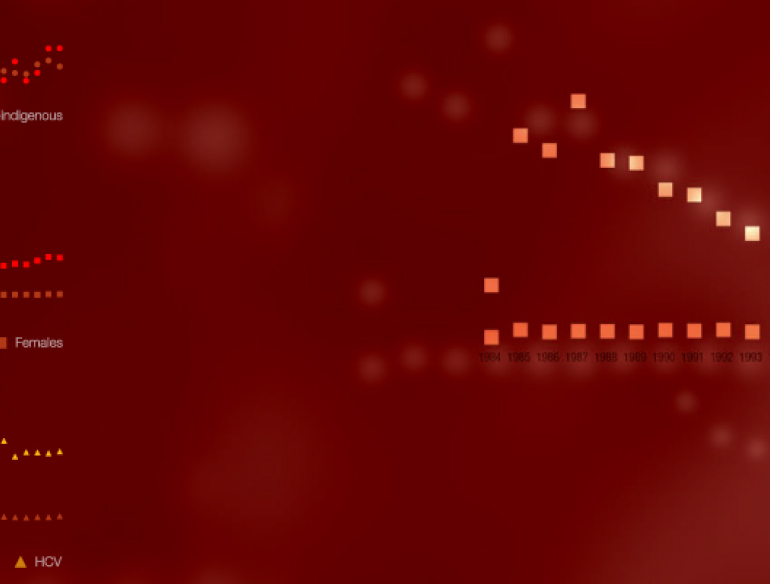Key findings
- A total of 1,236 cases of newly diagnosed HIV infection was notified in Australia in 2013, similar to the number notified in 2012 (1,253). The rate of HIV diagnosis per 100,000 population increased from around 4.7 in 2004 – 2008 to 5.1 in 2009 – 2013.
- The per capita rate of notification of hepatitis B infection in Australia in 2009 – 2013 was stable at around 31 per 100,000 population. The rate of notification of newly acquired hepatitis B infection steadily declined in Australia from 1.2 in 2009 to 0.7 per 100,000 population in 2013.
- The per capita rate of diagnosis of hepatitis C antibody declined from 52.7 in 2009 to 46.3 per 100,000 population in 2013. The rate of diagnosis of hepatitis C antibody in the Aboriginal and Torres Strait Islander population was more than three times the rate in the non‑Indigenous population in 2013.
- Chlamydia was the most frequently reported notifiable condition in Australia in 2013 with 82,537 diagnoses. The population rate of diagnosis of chlamydia in 2013 was 359 per 100,000 population, a decline on the rate for 2012 (364). This is the first occurrence of a reversal in the increasing trend in rates of chlamydia diagnosis from the commencement of notification by all state and territory health jurisdictions in 1999.
- The number of cases of gonorrhoea notified in 2013 was 14,947. The rate of diagnosis of gonorrhoea increased by 72%, from 37.5 per 100,000 population in 2009 to 64.6 in 2013, with increasing diagnoses in both males and females.
